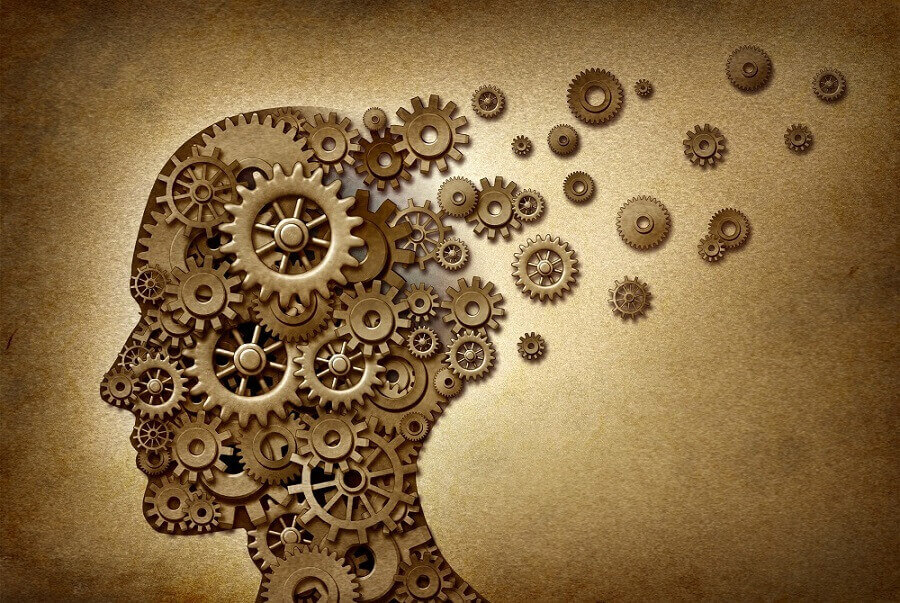The ways of the human mind are limitless and beyond typical scientific understanding. Mental illness has been the subject of countless research papers throughout history. The road to our current understanding of it has taken us through valleys wrought with unethical practices, cays of erring thoughts, and finally, psychoanalytical processes that ultimately brought upon some progress.
Therapy was one of the resulting practices. Yet looking at it intrinsically can be counterproductive. We must learn not to fear the word ‘therapy’ and the practices it implies. Instead, this should be seen as a definitive way to improve sense. Therapy is a companion one has never had. Therapy can heal, therapy can alleviate, and it can most certainly dull away pain.
The following review is set to look at the common issues that arise when dealing with mental illness. We understand that approaching such a subject is, at the very least, difficult. We do not pretend to hold the key to mending you or your loved ones’ minds. Still, we try to give our objective understanding of how sensory perception, social behavior, and peace of mind can be improved through the use of psychoanalytical, mindfulness-based, or cognitive-behavioral therapy.

Describing Mental Illness – Searching for a Definition
Mental illness is not something you define easily. Truthfully speaking, it’s not something worth the effort to try defining. A simpler approach to understanding what mental disorders represent would be analysis. This is the general assumption behind theories relating to psychology and psychoanalysis in particular.
The human psyche is an endless source of mystery and bewilderment for the world of science. There have been cases when completely rational people have simply stopped seeing reason. Meanwhile, some other mental conditions tend to fade away on their own. Whichever the case is for the people reading this or their loved ones, it should be clear that the best advice possible can only come from a professional therapist.
Mental illness is generally classified as such only when a person exhibits a certain condition which prevents said person from functioning normally within society. That being said, this definition is also vague since it implies the existence of a level of social normality equally understandable by all people. Whereas in reality, the perceptions of normal behavior are imaginings of each and every individual in part, and of the general imaginary of a nation when it comes to law.
For example, a person considered acceptable by the social standards in western Europe might have difficulty adapting in other parts of the globe. Generally, though, mental illness can be reduced to a person that does not function according to the societal norms regardless of space and place. Sadly, oversimplification is often the case when it comes to talking about mental disorders to the great variety of known issues. More about this over the following subsection.

Recognizing Mental Illness – Looking for Signs
The multitude of mental disorders that may be exhibited by a single person makes the diagnoses of said conditions far more complicated. This is especially true since the scientific world agrees that one severe illness brings with it several less chronic disorders.
Medical care does not always account for the emotional state of people with mental disorders. Social stigma can also represent a radical impact on the patient’s mental state, further engulfing and estranging the individual. While we shall speak about this later on, it’s easy to thus understand the chain reactions that mental disorders may produce.
Here are the most common types of mental illness:
- Depression. Also known as major depressive disorder, this mental condition is by far the most commonly diagnosed in the world. The typical signs of depression are low levels of self-esteem, mood swings including persistently low dispositions. People that suffer from this disorder are generally unable to enjoy pleasure fully and lose interest in typical human activities. The clear indication of depression is the appearance of a major depressive episode in which an individual is affected by a severely apathetic mood for at least two weeks.
- Dementia. Senility is a condition that covers a broad range of brain disorders. Although a person’s consciousness is not affected when he or she is suffering from dementia, their mental functioning impairs proper access to normal consciousness. The greater part of dementia cases is characterized by Alzheimer’s disease, vascular dementia, and Lewy body dementia.
Therapy can heal, therapy can alleviate, and it can most certainly dull away pain.
- Insomnia. This one may be self-explanatory. However, insomnia represents not just problems with falling asleep, but also with staying asleep or with getting a full night’s rest. The signs of insomnia are pretty obvious. Insomnia also generally comes with other mental illnesses such as dementia or depression although some suffering from the latter may exhibit disturbed sleep which can turn into narcolepsy.
- OCD. One of the most commonly overused terms designating a mental illness, obsessive compulsive disorder (OCD) is a disorder often far worse than those pretending to suffer from it know. OCD is characterized by an incessant need to repeatedly check everything for flaws. An individual with OCD may frequently wash his or her hands, count things, and verify locks.
- Autism. Probably one of the most difficult to diagnose and then to deal with, autism is a neurodevelopmental disorder that hinders the normal social, verbal, and non-verbal behavior of a child. The signs and symptoms of autism can, in time, overlap, thus making it very difficult to contain the child’s behavior.
- Bipolar disorder. One of the most complicated of mental illnesses, bipolar disorder implies periods of apparent normality or of elevated mood that are countered by periods of severe depression, social apathy, and disdain. The mania episodes can turn psychotic, while the individual exhibits prolong periods of heightened energy, happiness, or irritation.
Apart from these cases of mental disorders which make up most of the world’s diagnoses when it comes to mental illness, there are many more, far more complicated. However, one of the most successful ways to alleviate the pain and distraught associated with these is therapy.

Managing Mental Illness – Types of Therapy
Fortunately, the modern world offers plenty of therapy solutions for those looking to improve sense and social interaction for themselves or for their friends who are suffering from mental illness. Be it any one of the conditions above or any other one, therapy can drastically improve the life quality of those who choose this method of treatment.
Therapy can be a phenomenal way in which anxiety levels can be reduced and mental health improved. Here are the types of therapy that can benefit a person suffering from mental disorder:
Counselling
Counseling is a slightly toned down form of therapy. However, that does not mean that counseling is to not be taken seriously. Through adequate counseling, a person can alleviate feelings of anger, relationship problems, issues of redundancy, low morale, and depression due to infertility. Therapy through a personal counselor can furthermore prevent the beginning of mental illness.
Cognitive Behavioral Therapy
Cognitive behavioral therapy helps a person suffering from a mental disorder in that it cures them of their own patterns of vice and their unruly behavior. CBT can be taken both by people who suffer from a mental illness and by those who have only just begun to notice the symptoms. CBT has proven effective in combating depression, anxiety, phobias, OCD, PTSD, as well as panic attacks. Furthermore, it can help by adding occupational therapy to the daily routine of a patient.
Psychotherapy
Through psychotherapy, patients can delve deep into the base problems that stood at the onset of their mental illness. Psychotherapy is generally a long and complicated process by which a specialist interviews the patient thoroughly. The aim of psychotherapy would be to completely “cure” more advanced mental illnesses such as schizophrenia, dementia, and bipolar disorder.
Family Therapy
Family therapy implies a professional working with a family towards the common goal of eliminating behavioral problems within the family. Apart from mental health conditions (such as autism), therapy can also help with child problems, adolescent needs, divorces, addictions, and, more importantly, domestic violence, which can often be the background issue with many children that develop mental illness. It’s worth considering that the family therapist can also help with play therapy for children.

Couples Therapy
Alternatively dubbed relationship counseling, this type of therapy can help mental health issues that arise within a couple. The more advanced version of this would be marriage counseling which takes on more complicated and dire problems.
Group Therapy
Group therapy is something that is done by up to 12 people. Together, supervised by a professional therapist, they try to deal with each other’s problems. Generally, group therapy is centered around a certain mental condition that all of the participants share.
Interpersonal Therapy
Interpersonal therapy does not need to involve a professional. This is something that people can do in their homes in order to improve their condition or the condition of a close friend/relative. There are several methods of interpersonal therapy that can be practiced by anyone, tutorials for which can be found online.
Behavioral Therapy
Behavioral therapy, also known as behavioral activation, is different from cognitive behavioral therapy in that it promotes the development of positive behavior instead of trying to inhibit and reduce the onset of antisocial behavior. Through behavioral activation, persons suffering from mental illness can relearn to adapt to social norms.
Mindfulness-Based Therapy
Mindfulness therapy can effectively shield patients from their own emotions. Through mindfulness-based therapy, a person’s thoughts and emotions are focused, understood, and mediated so that the person exhibiting them can feel freed from their influence. MBT is generally split into two types of therapies: MBSR and MBCT – the first set on reducing stress, while the second focuses on improving cognitive function.

Living with Mental Illness and Sensing One’s Surroundings
Social stigma can also represent a radical impact on the patient’s mental state, further engulfing and estranging the individual.
Going to therapy and actually going through life while suffering from a mental illness are two undeniably different things. While therapy can help by a lot, the actual case is that social stigma can severely affect an individual struggling to function by the norms of society. The following bullet points highlight what the focuses of therapy should be so that a person under the burden of mental disorder can learn or relearn to adapt better to dealing with others:
- Setting the goals together. The relationship between a person and his or her therapist will always be the most important part of goal achieving. Thus, beginning with the first therapy session, the goals should be clearly stated and agreed upon by all parties – therapist and patient(s). This will help preserve the triviality of the social situation and not deepen the feeling of anxiety that mental health patients generally suffer from.
- Relearning social functions. Most people suffering from mental illness need to readapt to social life and they need to do it fast. When one’s psyche is swamped by contradictory emotions, it’s perfectly normal to lose grasp over the social norm since it seems to fade in importance. However, in order for a person to keep out of physical danger, this step should be paramount.
- Dealing with stigma. One of the most difficult parts in overcoming mental disorders is battling the social stigma generally associated with such conditions. A person with dementia, bipolar disorder, schizophrenia, or even depression could easily become the target of insensitive behavior or name-calling. Thus, a vital focus of therapy has always been training patients to overcome this behavior through understanding it.

- Overcoming unsuccessful therapy. Every therapist is different and the failure of a therapy process does not mean that that therapist was unequipped, but rather that he or she had made poor choices. Regardless, every new therapist should try to learn if a patient has had previous experience with therapy. Subsequently, whether or not that therapy has been effective or not.
- Controlling emotions and feelings. Behavioral therapists will also need to work with their patients on controlling their emotions so as to minimize the negative ones in favor of emphasizing the positive ones. Through behavioral activation, individuals suffering from mental illness enable optimistic thinking and foster a constructive behavior.
- Freeing oneself of mental constraints. Some therapists might choose to opt for mindfulness-based therapy as a form of granting their patients control of their feelings. This specific technique shields a person from the power of their own feelings while not locking them out from emotions altogether. Thus, the person will feel better and keep his or her strongest feelings in check.

Acceptance and Putting Theory into Practice
We sincerely hope we’ve been of help. Our current review of therapy and how it improves the life quality of people dealing with mental illness can only cover so much, therefore we may choose to update it from time to time with different pieces of information from the current and future literature on the subject.
Up to that point, we will keep posting articles about the importance of therapy and how it can improve sense in people with mental disorders. We value your opinions and comments so if you have any, feel free to address us directly.
All images were taken from depositphotos.com.
SCIENTIFIC RESOURCES:
www.waisman.wisc.edu
ps.psychiatryonline.org
www.harmreductionactioncenter.org
www.ncbi.nlm.nih.gov
